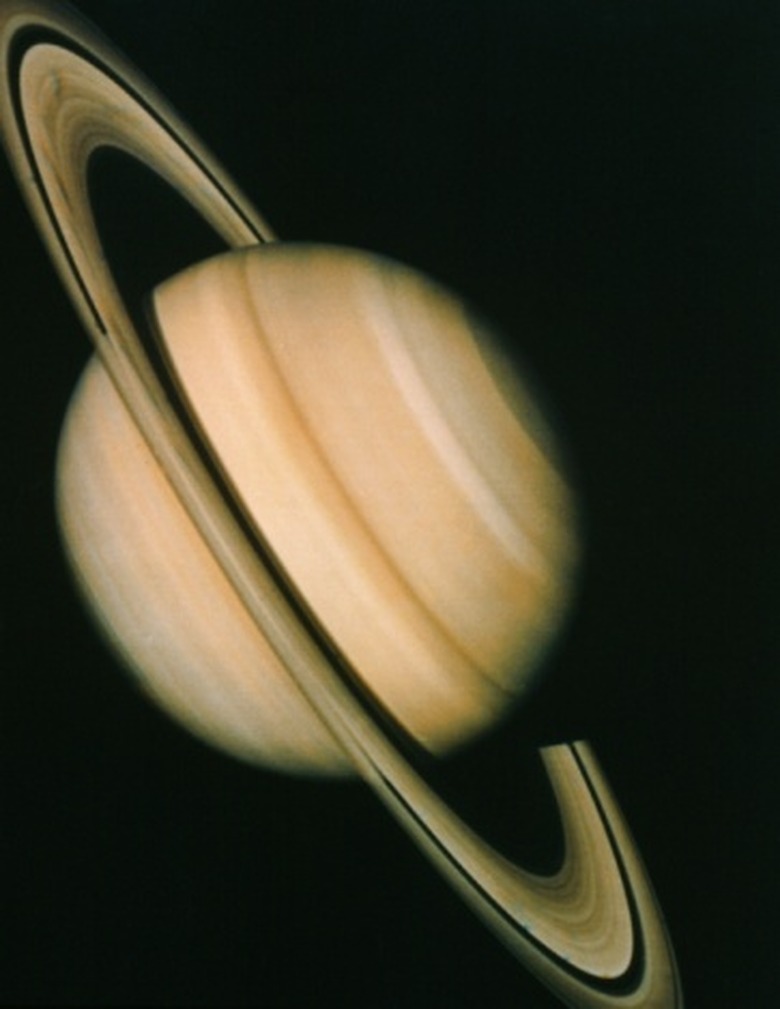What Do The Larger Planets Have In Common?
The eight planets of this solar system — Pluto having been formally demoted by the International Astronomers Union to the status of a dwarf planet — may be divided into the smaller terrestrial planets of Mercury, Venus, Earth and Mars, and the larger gas planets of Jupiter, Saturn, Uranus and Neptune. While each of the larger planets have unique characteristics, they do share a number of similar traits with each other.
Location
Location
The gas giants are sometimes referred to as the outer planets since they orbit farther from the sun than the inner terrestrial planets. A common unit of measure for distances within the solar system is the astronomical unit (AU) with one AU as the average distance between the Earth and the sun. Jupiter is the closest of the larger planets to the sun orbiting 5 AU, or five times the distance from the sun than the Earth. Distant Neptune orbits 30 AU away from the sun, which translates into a whopping 2.8 million miles from the sun.
Mass and Volume
Mass and Volume
The larger planets are significantly more massive and have a greater volume than the inner planets. Masses range for the larger planets from Uranus at 15 times more massive than Earth to Jupiter with a mass more than 300 times greater than Earth. Volumes for these planets range from 58 times that of Earth for Neptune to over 1,300 times the volume of Earth for Jupiter. However, the gas giants are far less dense than Earth or the other inner planets.
Composition
Composition
The larger planets in this solar system are gas giants composed primarily of hydrogen and helium. The percentage of helium and hydrogen varies between the planets and the presence of methane in Uranus and Neptune provide their bluish hue. Their thick atmospheres spawn powerful storms, such as Jupiter's Great Red Spot and Neptune's Great Dark Spot. Winds on Neptune reach 1,200 mph.
Moons
Moons
All of the larger planets have numerous moons. At least 50 moons orbit Jupiter, 53 around Saturn, 27 for Uranus and 13 for Neptune. These moons vary widely in their characteristics. Jupiter's moon Lo is the most volcanically active place in the solar system and Ganymede is larger than Mercury. Saturn's moon Titan has an atmosphere that extends farther above its surface than Earth's atmosphere. Uranus' Miranda has canyons deeper than the Grand Canyon and Neptune's Triton spews liquid nitrogen and methane from ice volcanoes.
Ring Systems
Ring Systems
The exquisite banded rings circling Saturn make it one of the most recognizable of the larger planets. However, all the larger planets have ring systems though less spectacular than Saturn's.
Cite This Article
MLA
Chandler, David. "What Do The Larger Planets Have In Common?" sciencing.com, https://www.sciencing.com/do-larger-planets-common-8511681/. 24 April 2017.
APA
Chandler, David. (2017, April 24). What Do The Larger Planets Have In Common?. sciencing.com. Retrieved from https://www.sciencing.com/do-larger-planets-common-8511681/
Chicago
Chandler, David. What Do The Larger Planets Have In Common? last modified March 24, 2022. https://www.sciencing.com/do-larger-planets-common-8511681/
